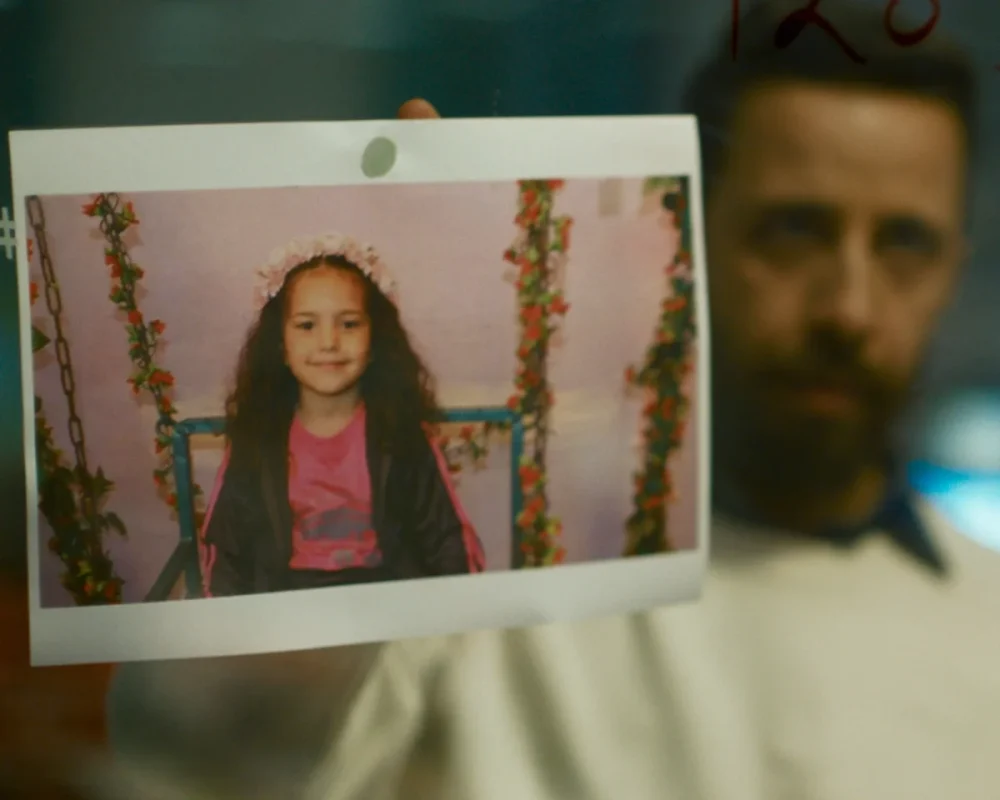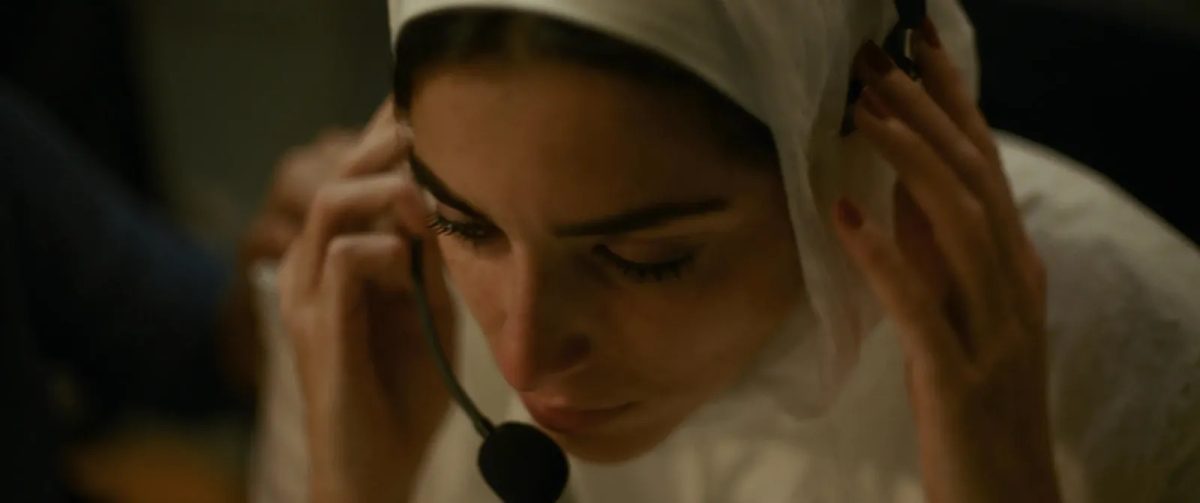“The Voice of Hind Rajab” (Original title: “Sawt Hind Rajab,” 2025) is activism in filmmaking. The use of cinema to shed a spotlight on a critical subject is generally reserved for documentarian work, as even the most detail-oriented films “based on a true story” still take some dramatic license with their material.
This is not the case of “The Voice of Hind Rajab,” a powerful recreation about the death of a five-year-old Palestinian girl who was killed by soldiers from the Israel Defense Force during the invasion of Gaza in January 2024. It’s more than likely that a majority of audiences that seek out “The Voice of Hind Rajab” are already aware of the gruesome details, but that doesn’t make the film any easier to stomach.
This type of reflective, visceral examination of genocide is rarely seen in such extreme detail, and it’s unprecedented to see such an immediate response. As important as a masterpiece like “Schindler’s List” was in the history of Holocaust cinema, it came decades after the end of World War II, in which there was some distance from the memory of the material. That film aimed to insist that such a tragedy should never happen again, whereas “The Voice of Hind Rajab” is a reminder of what is happening in the current moment. It’s intentionally reactive and will certainly be remembered as a time capsule of the anguish, frustration, and shattering mundanity in which mass slaughter has been received.
“The Voice of Hind Rajab” isn’t a masterclass in dramatic filmmaking, as the film is in constant dialogue with the nature of its production. This does not in any way lessen the importance of the material, but it does suggest that this is a work of vehement frankness about the realities of the situation, not cinematic poignancy.
Although the film follows the Red Crescent volunteers Rana Hassan Faqih (Saja Kilani), Mahdi M. Aljamal (Amer Hlehel), and Omar A. Alqam (Motaz Malhees) as they communicate with Hind Rajab after she becomes trapped in a car that’s been attacked by Israeli soldiers, director Kaouther Ben Hania inserts real audio clips and occasional cell phone footage of the actual conversations.

The incorporation of raw video material is not unprecedented within fact-based historical dramas, but “The Voice of Hind Rajab” calls specific attention to the plasticity of its recreations. When footage of the real Omar is shown in deliberate contrast to Malhees’ performance, it’s a reminder that the film itself is intended to visualize material that simply was not captured during the actual moment.
Even if “The Voice of Hind Rajab” isn’t a real-time restoration of the exact order of events, Ben Hania makes it a point to note that the medium is simply a vessel to convey truth. It’s startling as a reminder of how gutting the situation is, but it also reveals the unsystematic nature of the performances and filmmaking. Such a defiant work of immediacy makes for an inherently incohesive structure; the performances are intended to replicate, not to create an arc.
Also Read: Sometimes in April [2005] Movie Review: A Hard-Hitting Docudrama
It must be stressed that this isn’t a betrayal of what “The Voice of Hind Rajab” intends to spotlight, but it does mean that the film’s strengths are a result of the intrinsic value of the material, and not the efforts taken to restore it. The conflict between Omar and Hassan is constrained to tense, vehement exchanges about the green light that the Red Crescent would need in order to dispatch an ambulance to rescue Hind Rajab. Although it’s briefly noted that Hassan’s concerns lie in his guilt about losing fellow frontline workers, those complexities are ironed out when Omar becomes the domineering focus.
There may not be enough time within an 89-minute film to interweave the history and motivations of each figure within the story, but it’s often that “The Voice of Hind Rajab” dismisses the conflicts that exist within the Red Crescent itself. There is no need to spend time offering empathy to the aggressors in the situation, but the focus on Omar’s perspective does add some dramatic handicaps, particularly when the film’s final interview footage consists of far more compelling material with Hind Rajab’s family.

The up-close-and-personal, tight cinematography is effective in capturing the stunned reactions of the Red Crescent members, but it’s also a tool overused to the point that it begins to lose its effectiveness. Perhaps there was a limited amount of potential coverage options for a film that is ostensibly set in one location, as Ben Hania makes the compassionate decision not to feature violent recreations of the killings themselves.
Yet, the stripped-down nature of the film, as much as it is used to convey the hopelessness felt by first responders denied the chance to provide assistance, begins to feel more like a narrative device than a formally inventive work of confrontation.
Broader debates will certainly be held about the tactics used by Ben Hania to make the tragedy accessible to an audience with less familiarity with the situation. There’s no need to be anything but upfront when discussing the murder of a child, but “The Voice of Hind Rajab” does use some disturbing techniques to visualize that horror. Intimate shots of the audio levels and ticking-time countdowns serve as additional reminders of the factual parameters, but detract from the dramatic cohesiveness.
It’s also a film where the sympathies often lie with the front-line workers, even if their perspective was used to convey the helpless distress felt by those prevented from interfering, but that doesn’t mean there aren’t moments that feel questionably exploitative.
Assigning a numerical grade to “The Voice of Hind Rajab” feels rather negligible, as the quality of the film itself won’t change the fact that it will hopefully draw more scrutiny upon the true story. The concept that a film is more “important” than it is artistically crafted is often seen as a flippant response, but in the case of “The Voice of Hind Rajab,” it’s an apt summation of the plausible ramifications that its release may have.
This is, of course, dependent on the film’s release itself, as currently it has not yet been picked up for distribution in the United States, despite being submitted by Tunisia for the Academy Award for Best International Feature Film. The fact that this hasn’t occurred is both a disturbing indictment of Hollywood and an impediment to necessary discourse. Overall, “The Voice of Hind Rajab” is both a flawed work and an entirely necessary cinematic experience.




![And Then We Danced [2019] Cannes Review – A Georgian combination of Call Me By Your Name & Whiplash](https://79468c92.delivery.rocketcdn.me/wp-content/uploads/2019/05/and-then-we-danced-high-on-films-768x432.jpg)
![Manchester By The Sea [2016]: Devastating tale of a broken man.](https://79468c92.delivery.rocketcdn.me/wp-content/uploads/2017/02/Manchester-by-the-sea-768x512.jpg)



![New Order [2020] Review – Another Level of Manipulation](https://79468c92.delivery.rocketcdn.me/wp-content/uploads/2020/11/New-Order-highonfilms-1-768x432.jpg)